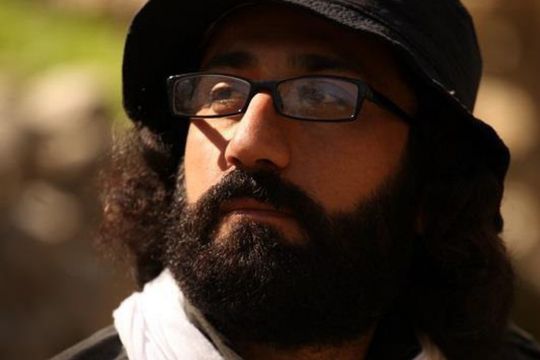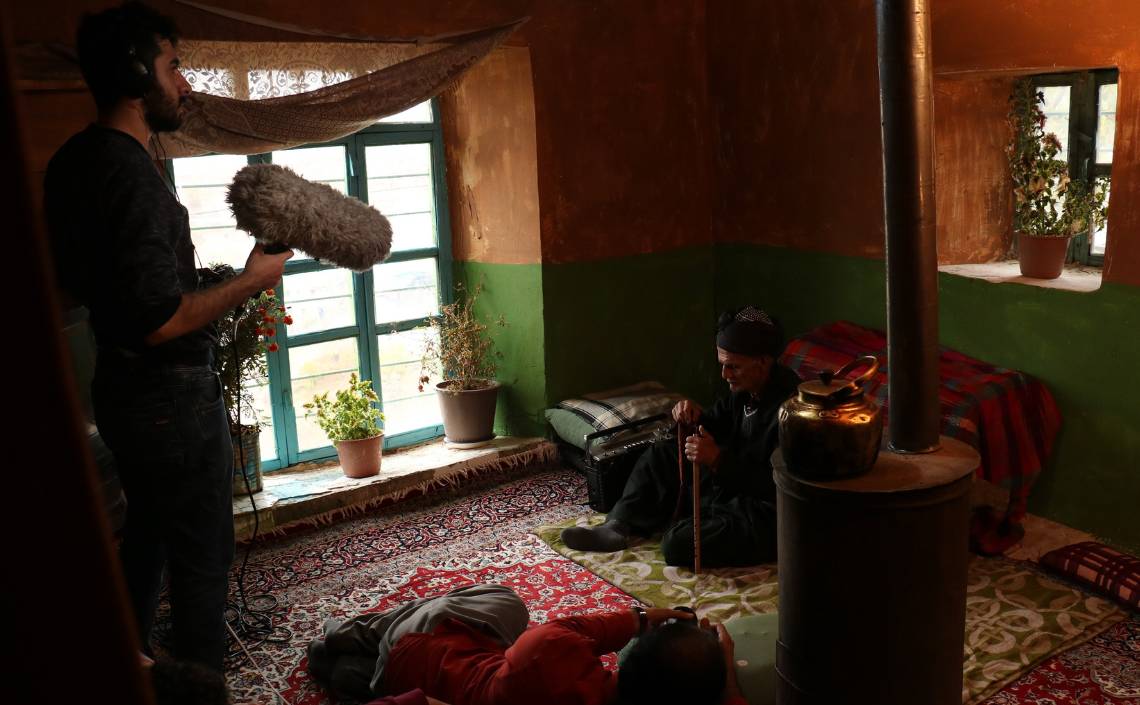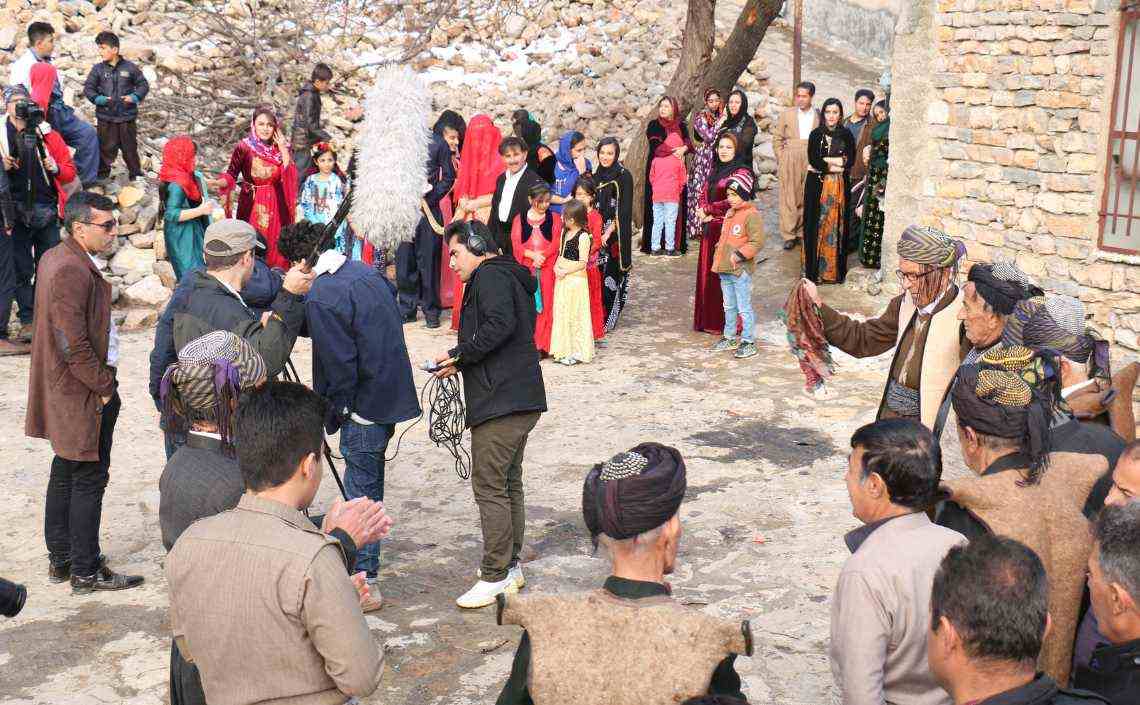Seven Symphonies of Zagros, directed by Parviz Rostami, narrates the philosophy of seven musical maqams of the oldest wind instrument (shamshal) in the lives of the people of Zagros.
The serene beauty of the Zagros mountains provides the backdrop for the documentary, narrated through the solemn words of one of its inhabitants, an 85-year-old man, who spent most of his life playing the shamshal (a Kurdish wind instrument). Shamshal becomes the faithful companion in his lonesome days, as well as a connection to the community at large.
- 23-27 OCT 2024
- Manchester, UK
The mountains of Zagros tell stories
An interview with Parviz Rostami
How did you find the main character of your film? Did the character inspire the film itself, or was it the other way - you searched for a character to the story you had?
After doing my research for the film, I went on to look for a character that had lived with shamshal for years. After one year on one of my trips to the Kermanshah province, Paveh city, I was acquainted with a man who was really suitable for the story of the film. An 85 year-old peddler musician who lived with shamshal all his life. He had attended all of the Zagrosian's ceremonies. We talked about my project and then he agreed to do it with pleasure. To be honest, I narrated the topic of the film in accordance with the life of the character of the story.
Shamshal is one of the oldest Kurdish instruments. From the film it seems it plays an important role in people’s lives: from weddings to funerals, and healing (music as therapy). Can you talk about how you decided to capture these various stages of life and the instrument?
Music has always played a specific role in all of my works. And I've always wanted to discover the unknown parts of this significant element across various periods of the lives of the Kurdish people. In fact as a Zagrosian man since childhood up to now the sound of shamshal has always been the caresser of all of my happy and sad moments. And l have always loved to see its colorful presence in my camera frame. Shamshal was mostly used in the Mithraism and Zoroastrian eras. And with the accompaniment of Siav Chamane's songs, it has always been the story of the epic life of Zagros residents.
The film is divided into several chapters. Can you talk about these and their importance?
In fact, I depicted the philosophy of the seven Maqams - "positions" of shamshal - in seven chapters. At the beginning of the film, the geography of the character's place of residence and the history and beliefs of the inhabitants of that land are narrated through the language of the main character.
The first position is the Sahari position, which is played when the sun rises. By playing Sahari people used to start their daily work, and in a way, the song initiates their everyday activities.
The second place of Shamshal is "Haraleh Zardeh". In fact, this Maqam is for reconciliation and coexistence with nature. The people of Zagros believe that local music and tunes can have a direct effect on the fruiting of trees and the freshness of their gardens. According to the character of the story, because of playing the shamshal for the trees in his garden, he witnesses the abundance and blessing of the harvest every year.
The third Maqam is "Maigaleh". The residents of Zagros, especially the people of Oraman, believe that the sound of the shamshal has a direct effect on the peace and milking of their sheep and other domestic animals, and most of the native shepherds of the region have acknowledged this importance. Respect for nature and protection of animals is one of the characteristics of the people. It is Hevaraman who is famous in the history of Kurdistan.
The fourth Maqam of Shamshal is the Maqam of love, which is related to the wedding ceremony of the people of Zagros. From the distant past until now, the pleasant sound of shamshal, which is accompanied by the clapping of local singers, has always kept love and hope alive in their hearts. Maqam Eshgh has several different melodies with a two-bar rhythm, each of which narrates a part of their love stories.
Typhoid "Hasbeh" is the fifth Maqam of shamshal, which is used to heal a person suffering from typhoid. In the past, due to the remoteness of the region, there was no access to doctors and medicine, and people turned to music to heal the sick. According to the musicians of shamshal and natives of Zagros, typhoid maqam has been the savior of many sufferers of this disease.
The sixth position is "Daraee" (Sofism), which is mostly used in holy places and to accompany collective prayer. Darvishes and followers of Naqshbandiah, Qadiriah and Kasanzani tariqats perform zikr and sama in the holy places of Kurdistan (Khaneh Qah). The accompaniment of the shamshal instrument with the group of funeral musicians adds a new element to this mystical gathering. According to local storytellers, shamshal's voice, in harmony with the daf, appears more as a "Daraee" and is very effective in relieving mental pain.
And finally, the seventh position is the Chamri position, which is the news of death and the end of life. Chamari is the official who announces the death of someone from the village and with this official they accompany the dead to the cemetery. The accompaniment of the dead with the mournful sound of the tambourine and shamshal shows the great importance of music for the people of Zagros, who always tune the rhythm of life with the soulful sound of the shamshal. A narrative of life with music from birth to death, a unique characteristic of the people of Zagros, Kurdistan.
We see the beautiful hills of Zagros through the main character, whose loneliness is only accentuated during the cold winter months. There is stillness and grace in the film that was also achieved by the film's cinematography and dramaturgy. Can you talk about the cinematic and dramaturgy aspect?
The mountains of Zagros tell stories that have been hidden in their hearts for a long time. Geographical Kurdistan Oramanate, whose history dates back 3500 years, has the most traces of early civilizations in the slopes of Zagros. A pristine nature with unique perspectives, a land with kind and warm-hearted people, people who learned hard work and perseverance from the mountains and kindness from the sound of the rivers and the greenery of their gardens. The literature and culture of the people of Zagros is remarkable. All the beauty of this ancient land is shown in the poems of Kurdish poets, and this is a sign of the cultural richness of the region.
Are you working on any films at the moment?
Currently, I have several screenplays that, unfortunately, I have not been able to produce due to the lack of funding. I hope to start my new job this spring.
How does the current situation in Iran impact artists and creatives like you?
True art is the result of suffering and hardship in life, and this is not something unfamiliar for a Kurdish artist. If we look at the historical and cultural identity of the Kurds, an important part of their history has been the liberation struggle to get rid of discrimination and racism. Currently, in the critical situation of Iran, the Kurds are at the forefront of the fight against the dictatorial system with the slogan "Women, Life and Freedom". As a Kurdish filmmaker, I believe that such conditions should not prevent the creation of works of art and silence artists, but it is the best excuse to produce magnificent works reflecting the existing conditions. The language of art has been the most important and effective defense tool for Kurdish artists in their history of struggle. The conditions of Kurdish artists have been very discriminatory and devoid of any human rights in all the years of the Islamic Republic. I hope one day we will witness the realization of the long dream of freedom for Kurds and all free people in the world.





